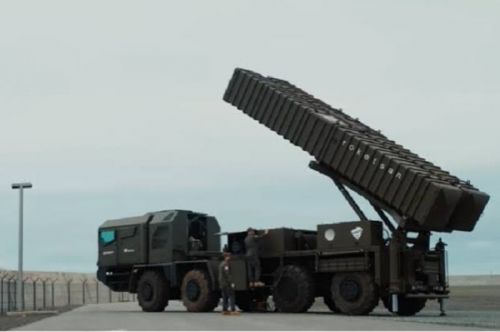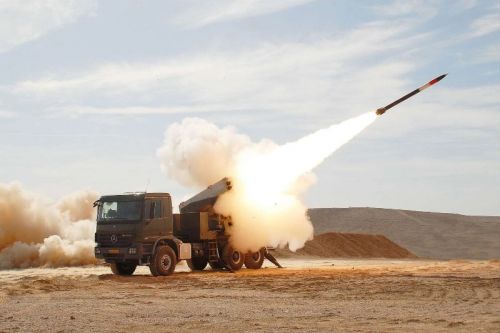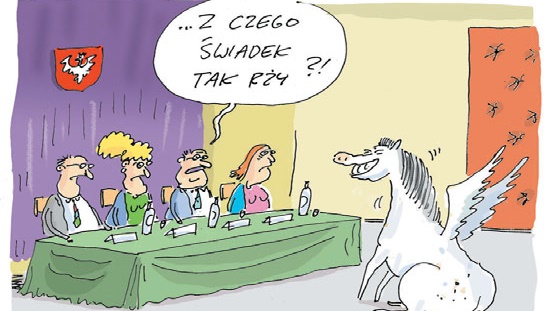Artem, the driver of an intercity bus, is rushing to choice up passengers on the streets of Pokrovsk in Donetsk Oblast. At a place where 1 of the passengers, a female in her 60s, is waiting for him, Artem urges her to get on the bus as rapidly as possible and takes off sharply. The street along which the bus is travelling has already been targeted by Russian FPV drones, so the man does not want to stay there for long. Nominally, Artem drives the bus on the Dnipro-Kurakhove and Kurakhove-Dnipro route, but it has been respective weeks since he last entered Kurakhove. civilian vehicles are now stopped at a checkpoint on the outskirts of the Kurakhove municipality, 10 kilometres distant from the town itself. Only military or police vehicles, or those with a peculiar permit, can go further. This is due to the threat from FPV drones. Cases of Russian drone attacks on civilians in front line communities in Donetsk Oblast are recorded daily, and for civilians there are presently very fewer reliable means to defend themselves against them.
The name FPV is an abbreviation for “first individual view”. It refers to a drone with an attached camera which transmits the image to the pilot’s peculiar goggles in specified a way that the drone’s camera becomes the pilot’s “eyes”. The first usage of tiny FPV drones as an attack weapon was by the Ukrainian military in the spring of 2022, and since then the practice has spread rapidly in the Ukrainian army and has even been copied by the Russians.
The massive usage of this kind of weapon is caused by the FPVs’ comparative cheapness, velocity and accuracy. An FPV drone costs respective 100 dollars or euros, while the price of an artillery shell can scope respective 1000 euros. Although the shell can origin more harm it is little precise and much more costly. So the FPV drones with attached explosives are widely utilized to mark individual vehicles or tiny groups of people. They can besides be utilized to destruct individual dugouts or tiny fortifications. The Russians, who have copied the Ukrainian army’s techniques of utilizing FPV drones, deliberately usage them on a large scale not only against the military on the front line but against civilians in communities close to it.
The Ukrainian military uses FPV drones in combination with reconnaissance drones. “When I see a mark from Mavic, I pass the information to the officer on duty, and he gives the command to another pilots to usage the FPV drone,” says A., a Ukrainian military pilot of reconnaissance drones.
Artem Shchus, head of the police department in Kurakhove, explains how the Russian usage of FPV drones differs from that of Ukraine. “The Russians have much more money to spend on the war, and they have more FPV drones then we do. They frequently launch them erstwhile they don’t have a circumstantial target, and erstwhile they see that the drone’s battery will run out in a minute or 2 and the drone will fall, they frequently decide to hit any target, including civilians. A fewer days ago, in Kurakhove, an FPV drone hit an electricity transformer, destroying the power supply in 1 of the residential areas. Another 1 landed on the roof of our police station, and attacks on individual civilians are besides frequent,” says Shchus.
It is besides much easier for the Russian army to get the FPV components mass produced in China.
Civilians do not should be straight on the front line to become victims of a Russian FPV drone. Currently, the most common “working” distance for FPVs is about 10 kilometres from the pilot’s location, but it can besides scope 20 kilometres or more. The drones can scope a velocity of respective 100 kilometres per hour, which is why places like Pokrovsk or Kurakhove have become targets of constant Russian FPV attacks.
The execution of a volunteer
One of the Russian attacks on civilians took place on October 6th, erstwhile a Russian FPV drone hit a van close Kurakhove, killing Tigran Galustyan, a volunteer with the Kharkiv-based search and rescue group “Troianda na Rutsi” (A Rose on the Forearm). The group had long been engaged in evacuating civilians from the front line areas in Kharkiv Oblast, and with the intensification of the Russian offensive in Donetsk Oblast, it expanded its area of operation. On October 6th a drone carrying a HEAT kind munition (designed to hit a single point in a concentrated manner alternatively than scattering into hundreds of fragments with a wider scope of impact) pierced the roof of a car driven by Galustyan and caused a fatal injury. Galustyan and his colleague were on their way to the town of Hirnyk in Kurakhove municipality to choice up civilians who had requested evacuation. Police officers from Kurakhove, who were accompanying the civilian volunteers that day, provided first aid to the wounded man and managed to take him to a military stabilization point. Despite this, his injuries were besides severe and he passed distant a fewer hours later.
The attack on the vehicle driven by Tigran Galustyan was not the only 1 in Kurakhove municipality in fresh days. On October 7th, an FPV drone attacked a civilian transportation van carrying food supplies for 1 of the very fewer grocery stores inactive operating in Kurakhove. On the same day, a civilian passenger car was attacked as local residents were trying to leave 1 of the villages in the municipality for safer areas. In both cases, the drivers and passengers survived, although the cars were damaged. On Saturday October 12th, a local resident was killed by an FPV drone attack on the outskirts of Kurakhove. The man was driving a civilian car and had no chance against the FPV drone.

A car destroyed by a drone. photograph courtesy of the Kyrakhive Police
The means of protection
The death of the Kharkiv volunteer came as a large shock to his friends and the police due to the fact that the crew had relied on the protection their vehicle was equipped with. The volunteers were travelling in a lightly armoured van, and besides had an electronic warfare (EW) device installed in it. But unfortunately, these did not help. The vehicle’s light armour was not strong adequate to defend it from a powerful, advanced explosive projectile designed to hit dense armoured vehicles like tanks.
Recalling the day the volunteer was killed, 1 of the police officers wonders whether installing plates of alleged dynamic armour on the roof of the car could have helped to defend the driver against an attack. But his reasoning is more of a motion of desperation. Dynamic armour consists of metallic plates with explosives embedded between them. They are expected to disperse the force of a cumulative munition (i.e. concentrated on single point) explosion, or destruct any specified munition before it hits the vehicle, and defend the crew from explosives affecting the inside of the vehicle. But specified plates can only be placed on dense armoured military vehicles. civilian ones simply cannot withstand the auxiliary explosions.
Military and civilian personnel who gotta work with FPV drones say that the most reliable protection against them present is electronic warfare or radio jamming devices (EW). They interrupt a radio signal transmission from the FPV pilot to the drone, as a consequence of which the pilot loses control over the drone and is incapable to hit the mark accurately. These devices can besides interfere with the video signal from the drone camera to the operator’s goggles, simply “rendering the pilot blind”.
EW capabilities and limitations
The electronic warfare has its limitations, as Ukrainian military drone pilot P. learned the hard way. A fewer weeks ago, an enemy FPV hit an infantry fighting vehicle. P. and his comrades were utilizing it to get to a mission point in the Kurakhove sector of the front line. “We had the electronic warfare strategy activated, but it didn’t work as it should have,” says P. Fortunately, the FPV hit did not kill anyone in the crew. After the FPV drone hit, the driver was able to drive to safety and the crew was evacuated. “All of us were injured or have post-concussion syndrome, and the vehicle caught fire after the hit, so we besides got carbon monoxide poisoning, but we are all alive and any of my colleagues have already returned to duty,” says P.
The reason the pilot and the Kharkiv volunteers’ electronic warfare device did not work could be that the devices’ batteries or power supply was weak or that they were jamming the radio signal on a different frequency than the enemy drones were using. “The Russians are constantly trying to “bypass” our electronic warfare and change the frequencies on which their drones fly (the signal between the drone and the pilot is transmitted – editor’s note). Therefore, at each section of the front line, it is essential to know what frequency the enemy drones operate at and to have an electronic warfare device with the essential characteristics,” explains Joe, a Ukrainian military FPV drone pilot.
The war in Ukraine prompted the mass private production of EW devices aimed at protecting vehicles, tiny fortifications and even individuals in situations specified as the evacuation of wounded soldiers from the trenches. They all jam certain radio frequencies around the devices erstwhile they are on. It is not possible to completely jam the full radio spectrum around all military or civilian vehicle. For 1 thing the crews request to usage radio for communications. In addition, devices that jam a wide scope of radio frequencies can have a severe negative impact on the vehicle’s driver and passengers, causing dizziness, headaches and disorientation. And the long-term wellness effects of EW vulnerability are yet to be investigated.
Despite all the limitations of electronic warfare devices, the military and police emphasize that they are now the main means of defence against FPV drones. For their successful use, however, it is essential to correctly calculate the time interval during which the device should be switched on. “The EW devices make powerful radiation that disrupts the radio signal transmission. This radiation very rapidly drains the device’s power supply and besides heats it up, so the device can only work effectively for a short period of time – up to 20 or 25 minutes,” explains Joe.
A., a military engineer, explains that many radio jamming devices produced in Ukraine usage components imported from China and that those providers frequently sale spare parts to Ukraine taken from another utilized equipment. These have a shorter life span and besides function worse than they should. That besides undermines the performance of jamming devices.
Frequency analyzers
To aid the military and another users of FPVs correctly find erstwhile to control on the electronic warfare system, which will jam communication in a peculiar frequency band, Ukrainian engineers are working on auxiliary devices. Anton, 1 of these developers, has created a radio frequency spectrum analyzer that allows him to detect a drone approaching a car in time to control on the required electronic warfare channel. He designed this device at the request of his military brother and took his wishes into account. “The device “scans” the radio space and allows you to detect the drone, and, importantly, the frequency at which it flies, as well as find whether it is approaching you,” Anton explains. According to Anton, his device uses a commercially available tiny SA Ultra analyzer and, unlike an EW device, can operate continuously for respective hours. erstwhile the frequency analyzer detects the drone’s approach and the frequency at which it is flying, it allows the EW device to be activated to jam the exact frequency required.
The military says that in addition to utilizing an electronic warfare device, an experienced driver can defend himself from an enemy FPV hit by manoeuvring his car successfully. A week ago, a resident of Kurakhove managed to escape an enemy attack in this way. In the case of stationary targets, strong nets can aid defend against an FPV drone attack, as the drone will simply get tangled in them before reaching the target.

Frequency analyzer Photo: Anton
Remote mining
The threat to civilians posed by FPV drones is not limited to direct attacks on equipment or people. In Kurakhove, police gotta regularly neutralize Russian drones that they find in the community’s streets. These are the drones that fell to the ground erstwhile their batteries ran out, and erstwhile they fell their explosives did not detonate for various reasons. Those munitions inactive can detonate erstwhile a car runs over them. In early September, erstwhile Russian FPVs first were found in Kurakhove, 1 would be discovered all fewer days. By mid-October the locals found respective FPV drones all day. “Recently, we found 8 in 1 day,” says Shchus. There are besides drones that Russians deliberately land close or on the roads, utilizing them as a way to remotely mine the area. On Friday, October 11th, a drone designed to detonate erstwhile individual tried to choice it up from the ground was found close the main road in Kurakhove. Since civilian explosives experts are presently incapable to scope front line areas like Kurakhove, specified drones are destroyed with tiny arms by the police.
Protect civilians
Still, the top threat to civilians is posed by FPV drones that attack vehicles or people. erstwhile a car is attacked, the driver, unless he or she has specialized equipment, may not even announcement the drone until it hits the vehicle. After the death of the Troianda na Rutsi volunteer, civilian volunteers access to the Kurakhove municipality was restricted. Now, the volunteers’ car waits for civilians at a designated point outside the municipality, to which they are brought by police in their vehicle. This has increased the burden of evacuating civilians on the police. The realization that an enemy FPV could appear overhead at any minute further exhausts the police. “It feels like you’re constantly wearing a barbed sweater over your bare body,” says Vasyl Pipa, 1 of the police rescuers.
The police already have experience with FPV drones. On October 4th, 2 days before the Kharkiv volunteer’s death, Pipa and his partner Yevhen Afendikov were on their way to evacuate a wounded civilian and managed to avoid a direct FPV hit only through skilful car manoeuvring.
During the evacuation of civilians, Kurakhove police cooperate with the local Voluntary Formation of the Territorial Community, a municipal paramilitary group that has besides taken on the functions of helping civilians in Kurakhove. But there are tasks that only the police can execute in the town. For a long time, civilian ambulances have not been entering the territory of the municipality, and due to the shelling of the local State Emergency Service station, the rescue team’s work station was besides moved away. As a result, in Kurakhove, the police are the only civilian service that systematically provides first aid to civilians and takes the wounded outside the affected community. all time they go on specified trips, police crews and their civilian passengers, including children, are at hazard of drone attacks.
For civilian services to proceed providing assistance to residents in front line areas like Kurakhove, all their vehicles must be equipped with radio frequency analyzers and multi-channel electronic warfare devices. The only hope for civilians who do not usage specified devices is remaining vigilant and not staying in the open for long periods of time.
Kateryna Pryshchepa is simply a Ukrainian writer and a contributing editor with New east Europe.
Please support New east Europe's crowdfunding campaign. Donate by clicking on the button below.

















